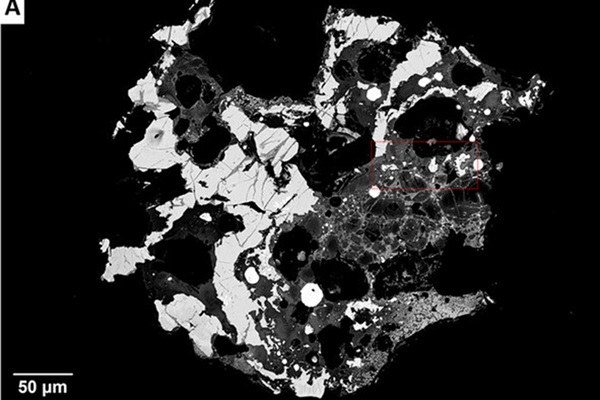Key Takeaways:
It’s not every day scientists discover an entirely new material adrift in the universe, but in pouring over the Khatyrka meteorite, researchers led by Luca Bindi found an all-new type of quasicrystal never seen before. The research was published in Scientific Reports.
Quasicrystals are an odd geological material residing somewhere between the tidy order of classic crystals like quartz and diamonds, and the utter chaos of amorphous messes like obsidian and glass. Crystalline solids have a regular chemical composition building a repeating pattern with very clearly-defined symmetry. Amorphous solids have no pattern or symmetry at all. Quasiperiod crystals – quasicrystals for short – have patterns without repeating. The result is more akin to medieval Islamic mosaics than kitchen tiles, patterns following mathematics rules without the symmetry fundamental to crystals.
Quasicrystals have a dramatic history. Dan Shechtman grew the first quasicrystal in 1982, a discovery so controversial he was asked to leave his research lab. But the evidence was overwhelming: this was a new type of material. Schechtman was honored for the discovery with the 2011 Nobel Prize in Chemistry.
More synthetic crystals followed, but the next breakthrough was finding two matching quasicrystals in tiny fragments of the Khatyrka meteorite in 2009. The first wild quasicrystals’ structures were familiar, a variation on a synthetic quasicrystal grown from aluminum, copper, and iron in the lab. Today’s discovery of a new quasicrystal from the same meteorite is even more exciting, marking not just the third quasicrystal ever found in nature, but also the first new type of quasicrystal found the wild before it was ever grown in a lab.
In the lab, quasicrystals need very particular conditions for growth or the same mix of chemicals will default into a symmetrical crystal structure instead. So how do they form in the chaotic real world?
A research group led by Paul Asimow and including Bindi tried to experimentally recreate scenarios that could spawn quasicrystals. Taking a hint from Khatyrka’s evident history of violent collisions leading to shock-melting at over 5GPa of pressure at 1,200C, they fired bullets of mock-meteorites into a larger stationary fragment in a high-energy dead-on impact. The results announced earlier this year proved that, at least in theory, asteroids ramming into each other with enough energy followed by the rapid cooling enabled by deep space creates, briefly, an environment where quasicrystals naturally spawn.
Encouraged, Bindi, Shechtman, and the rest of the team started reanalyzing their precious rock, searching for any more evidence to support their theories. They methodically searched for quasicrystals just a few microns in size, the proverbial needle in the haystack but harder to find. Their painstaking search paid off: on a meteorite chip less than half a millimeter across, they found their needle, an new quasicrystal. Like the previous discovery, it formed from a mix of aluminum, copper, and iron, but in different proportions to create an all-new structure never seen before.
Nobody is quite sure how to apply these new materials, nor where else they might be found. But with three discoveries of two quasicrystals behind them, scientists have good reason to keep up their painstakingly-systematic search to discovery.










